Reviews
Godzilla x Megaguirus: G Extermination Strategy / Gojira tai Megagirasu Ji Shometsu Sakusen
Masaaki Tezuka
Japan, 2000
Credits
Review by Steve Macfarlane
Posted on 24 February 2013
Source YouTube
Categories The Compleat Godzilla
Godzilla vs. Megaguirus was deep into production before its predecessor Godzilla 2000 had even been released; with jealous gusto, Toho sought to dialectically unite the slickness of the American version (whom online fans had renamed GINO, or Godzilla In Name Only) with the color and pageantry of the originals. The sequels’ relationships to mythology had always been problematic for new directors and screenwriters, so the opening gambit is, imagination-wise, salivating: Godzilla’s history is rewritten from scratch in a matter of minutes, giving director Masaaki Tezuka the opportunity to “direct” the original black and white Godzilla using the more reptilian, ferocious monster design of the late 90s/early 2000s. Godzilla, it is explained, pops up in Japan to wreak havoc on whatever drives economic growth; after demolishing Tokyo, the capital city is changed to Osaka. After Godzilla destroys the country’s first nuclear power plant, the Parliament bankrolls a massive nationwide campaign for alternative energy. The first plasma (read: nuke-free) power plant is pioneered the late 90s, and destroyed by Godzilla nevertheless. And so on.
In short, the monster is redrawn as neither hero nor villain but as a weirdly sentient, political-activist force of destruction. The human characters belong to the same cadre as ever—called Japan Self-Defense Forces, G-Force, Earth Defense Force and so on in earlier entries, this time the military entity is known as the “G-Graspers”. They speak in the clinical, systematized parlance common to scientists and hackers, referring to Godzilla only as “G”. Characters measure one another’s mettle on the basis of how badly they want to destroy G, but the two strongest advocates are Linda Hamilton-grade female soldier Tsujimori and a wisened Hillary Clinton-esque female scientist Yoshino (Yuriko Hoshi, who played the love interest in Mothra vs. Godzilla.) Yoshino, it’s revealed, was the architect of the plasma plant destroyed by Godzilla; her colleagues were slaughtered in the attack, but she escaped within inches of her life.
Both women, it is made clear, have drawn themselves at opposition with Godzilla on an existential scale, both as patriots and human beings. G-Grasper projects are initiated on the knowledge that Godzilla is drawn towards energy sources, so they - with the collusion of yet another made-up Japanese defense ministry - develop a weapon called the “Dimension Tide” which, in effect, harnesses black hole energy via satellite and creates a perimeter of antimatter around a patch of Earth. The plan is less to kill Godzilla than to zip him into another galaxy. The film’s most ludicrous moment comes when Tsujimori is dispatched, via government-made UFO, to ride on Godzilla’s atomic fins while he splashes around in the ocean, so as to - with a small pistol - embed a tracking device in his hide. An establishing shot of a satellite floating above earth bears the subtitle: “DIMENSION TIDE (Black Hole Gun)”.
When they finally decide, on yet another remote island, to launch the weapon on Godzilla, the rub comes in the form of a hideously jagged, evil-looking pink-and-purple swarm of dragonflies called Meganula. Hatched from a prehistoric egg, the bugs absorb the Dimension Tide’s energy and grow gigantic, eventually - after flooding Tokyo, beating Godzilla in battle and devouring/spitting out a drunk young Japanese couple, splaying mucus everywhere - coalescing into the massive airborne bug Megaguirus. The scientists are crestfallen; their alternative to conventional arms unwittingly creates another monster entirely, and the flimsiness of the original Dimension Tide plan is unintentionally exposed when one of the generals barks “just kill Godzilla and Megaguirus both!” The effect is a meticulously realized self-defense force that can only, after years of preparation, take down one monster threat at a time. A scene aptly concludes with one of the top scientists, a chainsmoking Godzilla-veteran, flipping over an entire chess set.
The screenplay itemizes Japan’s responses to Godzilla into computer screens, evacuation warnings, declarations in the Japanese parliament, surveillance footage, hapless newscasters and coast guards. The notion of personally “surviving” a Godzilla attack is reintroduced for the first time with any seriousness since 1954. In effect, the plan to stop Godzilla is thwarted by both monsters; for Godzilla’s resistance is natural, but by blunting the original idea of the Dimension Tide, Megaguirus compounds the problem, giving Godzilla yet another reason to continue as the lesser evil. In a funny way, the emotional crisis at the core of Godzilla vs. Megaguirus deals with the ideology of what Quentin Tarantino called “life under Godzilla”. After dispatching Megaguirus in a terrific Shibuya battle scene (hampered, unfortunately, by awful digital compositing and some very unsuccessful jerky slow motion), Godzilla goes back on his classic solo rampage. The monster’s target is the national Science Institute, where, it’s revealed, a secret neutron bomb is in the works.
“Every country has a secret or two”, barks the lead scientist. “It will bring great wealth to our country.” Tsujimori decks him him in the face, and Yoshino holds her back as she sobs: “How many human lives fell victim to Godzilla? You wasted their lives!” In these final moments, Godzilla is recast less as a hubris’ consequence than as its conscience—a freak aberration with a high body count, but in the same breath, a check against humanity’s worst appetites. (It’s our world; Godzilla is just living in it!) When the Dimension Tide - fixed in a flurry of keystrokes - is reactivated against Godzilla, he disappears instantaneously. Tsujimori stands atop a skyscraper, looking over the giant crater in the heart of Shibuya, finally letting her auburn-dyed (as was fashionable in Japan at the time) hair blow in the wind. It’s a moment of swift relief undermined by its own finality; how trustworthy, after all, is any technology that erases a problem as big as Godzilla?
More The Compleat Godzilla
-
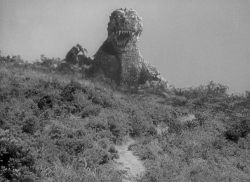
Godzilla
1954 -
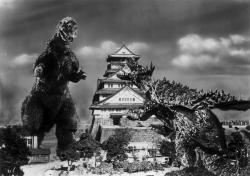
Godzilla Raids Again
1955 -

King Kong vs. Godzilla
1962 -

Mothra vs. Godzilla
1964 -
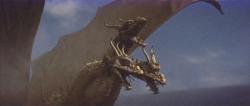
Ghidorah, the Three-Headed Monster
1964 -
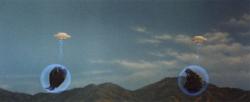
Invasion of Astro-Monster
1965 -

Ebirah, Horror of the Deep
1966 -

Son of Godzilla
1967 -

Destroy All Monsters!
1968 -
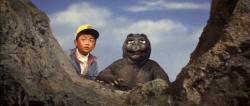
All Monsters Attack
1969 -

Godzilla Vs. Hedorah
1971 -
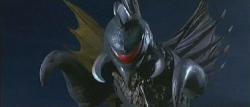
Godzilla vs. Gigan
1972 -
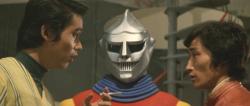
Godzilla vs. Megalon
1973 -

Godzilla vs. Mechagodzilla
1974 -
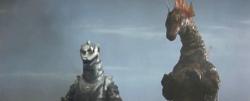
Terror of Mechagodzilla
1975 -

The Return of Godzilla
1984 -

Godzilla vs. Biollante
1989 -
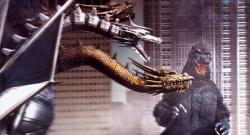
Godzilla vs. King Ghidorah
1991 -
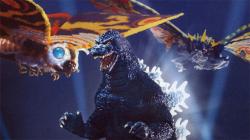
Godzilla vs. Mothra
1992 -
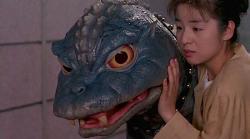
Godzilla vs. Mechagodzilla
1993 -
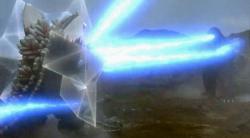
Godzilla vs. SpaceGodzilla
1994 -
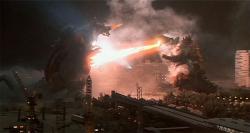
Godzilla vs. Destoroyah
1995 -

Godzilla 2000
1999 -

Godzilla vs. Megaguirus
2000 -
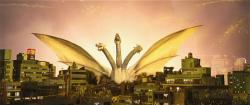
Godzilla, Mothra and King Ghidorah: Giant Monsters All-Out Attack
2001 -

Godzilla Against Mechagodzilla
2002 -

Godzilla: Tokyo S.O.S.
2003 -

Godzilla: Final Wars
2004
We don’t do comments anymore, but you may contact us here or find us on Twitter or Facebook.



